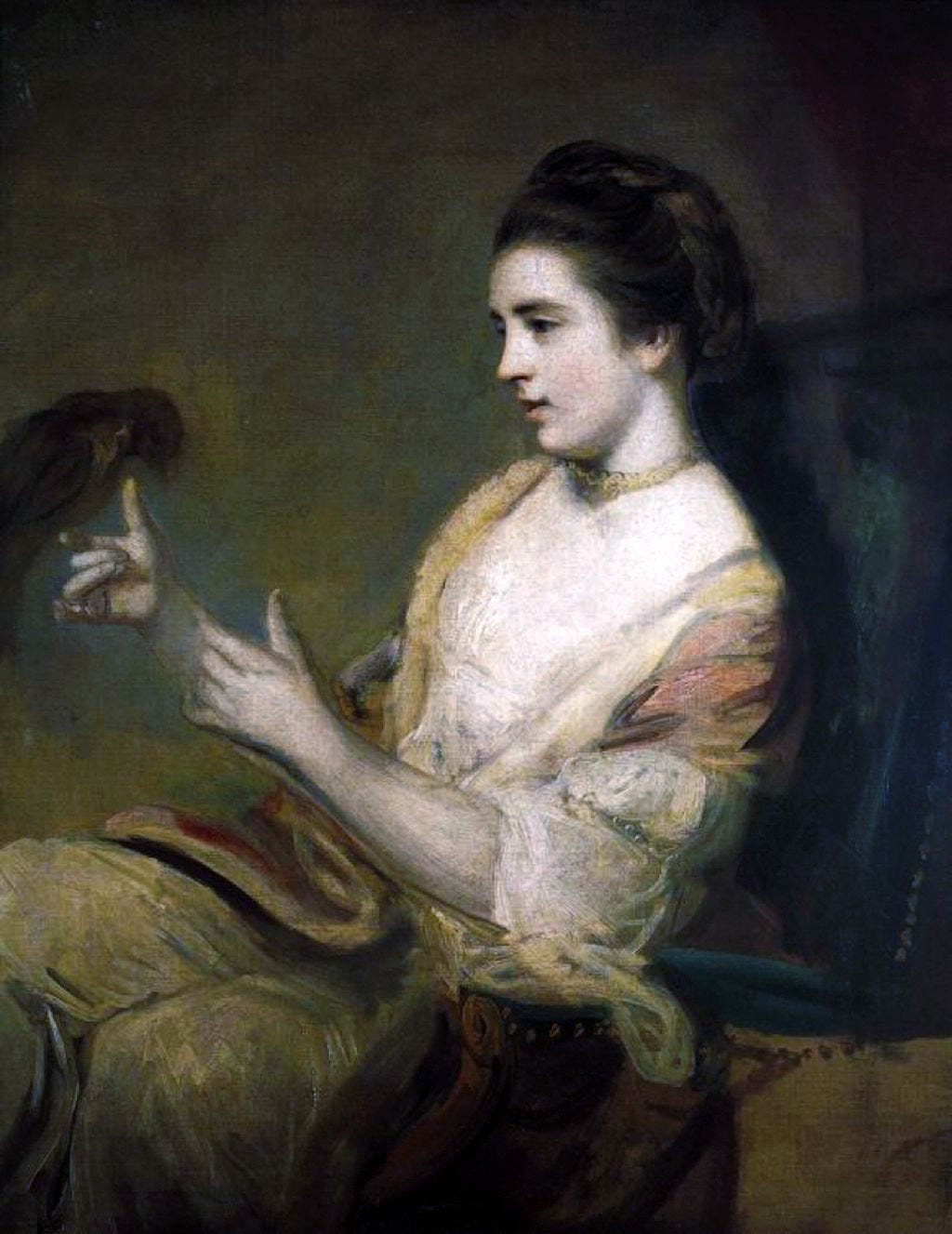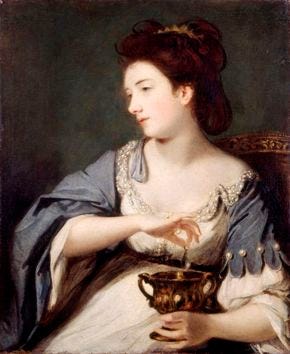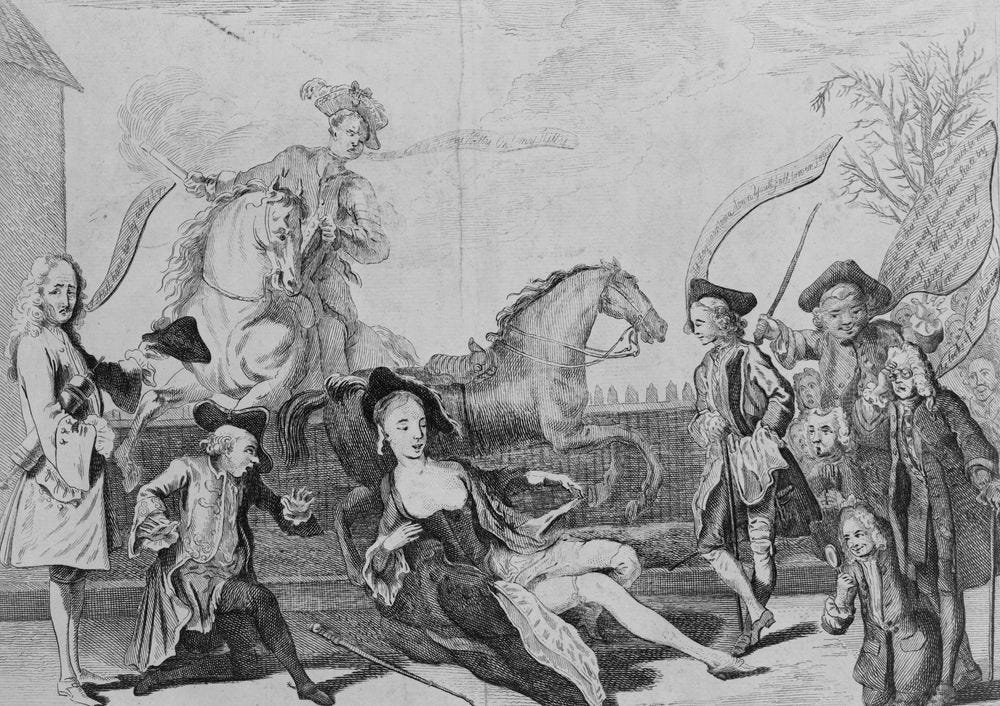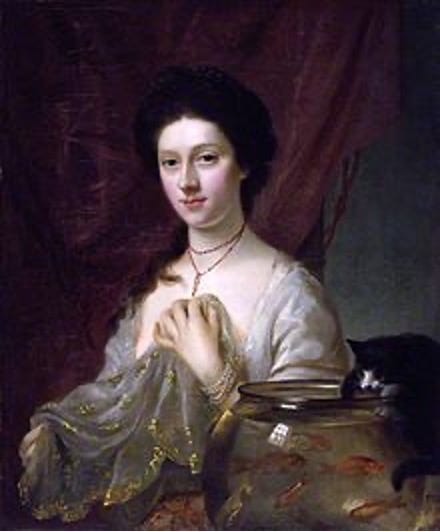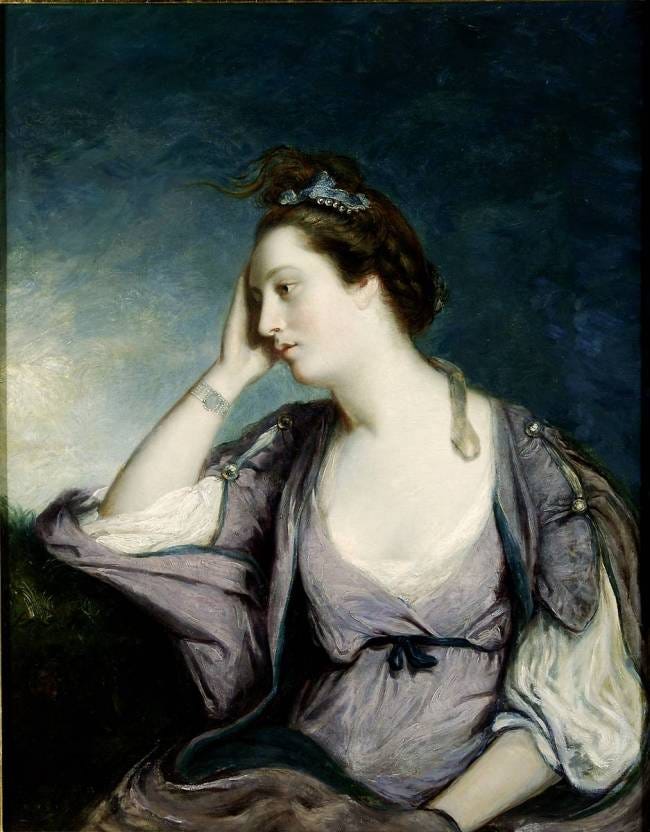Who was Kitty Fisher?
Sometimes I stumble into destinies and can’t help myself being mesmerized and drawn into stories from passed times. Recently I read about Kitty Fisher, a courtesan from English social life...
Catherine Maria Fischer (1 June 1741 – 10 March 1767), known as Kitty Fisher, was a prominent British courtesan.From her teenage years onward, Kitty Fisher developed a carefully molded public image, which was enhanced by acknowledgement from Sir Joshua Reynolds and other artists. By emphasizing Fisher's beauty, audacity, and charm, portraits of her, along with newspaper and magazine articles promoted her reputation, prompting spectators to view her with awe.
She was one of the world's first celebrities who was not famous for being an actress, musician, or member of the royalty, but simply for being famous. Her life exemplifies the emergence of mass media publishing and fame in an era when capitalism, commercialism, global markets, and rising emphasis on public opinion were transforming England.(https://en.wikipedia.org/wiki/Kitty_Fisher)
Kitty Fisher and parrot by Joshua Reynolds
The model, Kitty Fisher, wears a white silk dress, open at the throat. She sits in a high-backed blue velvet chair, the back of which hangs a small red curtain. Her hands are half-raised and open in front of her. Resting on the index finger of her right hand is a parrot, at which she is looking. The background of the painting is light grey
With a flair for publicity, she became known for her affairs with men of wealth. Her appearance and dress were scrutinized and copied. Scurrilous broadsheets and satires upon her were printed and circulated, and several portraits of her by Joshua Reynolds, including one in which she posed as Cleopatra Dissolving the Pearl, were engraved. Prints from these engravings were sold to thousands of her fans, making Kitty Fisher one of the first "pin-up" glamour girls.
Joshua Reynolds, Kitty Fisher as "Cleopatra" Dissolving the Pearl, 1759, oil on canvas, Kenwood House, English Heritage; Iveagh Bequest, 1927. (Photo courtesy American Federation of Arts)
In his 1759 portrait Kitty Fisher as "Cleopatra" Dissolving the Pearl, Reynolds depicts a scene that recalls an ancient legend: at a magnificent banquet held in Alexandria to impress Mark Antony, Cleopatra pulled a giant pearl from her ear, dissolved it in her wine, and drank it. The scene also might allude to the rumor that Fisher once ate a banknote on a piece of bread in exchange for a sum of money. Regardless of the verity of either story, the painting reflects Fisher’s alluring beauty, powers of seduction, and notorious extravagance. When Fisher died in her mid-20s, the press called her “a martyr to the cosmetic art” because of gossip that she died from the then-familiar-misfortune of applying too much lead-white paint on her face. (https://www.mfah.org/blogs/inside-mfah/characters-kenwood-kitty-fisher)
In one famous incident, on 12 March 1759, Kitty Fisher fell off her horse while riding in St James's Park and exposed herself (as split-leg undergarments did not exist in the time period). Scores of broadsheets, ballads, and prints mocked her, playing on the pun of her being a fallen woman. But Fisher was not one to be outdone, and she immediately seized public attention for her own ends by having her portrait painted by the most prominent painters in England.
Her fame spread throughout Europe. When he visited London in 1763, the famous Italian lover Giacomo Casanova met Fisher and wrote:
“... the illustrious Kitty Fisher, who was just beginning to be fashionable. She was magnificently dressed, and it is no exaggeration to say that she had on diamonds worth five hundred thousand francs. Goudar told me that if I liked I might have her then and there for ten guineas. I did not care to do so, however, for, though charming, she could only speak English, and I liked to have all my senses, including that of hearing, gratified. When she had gone, Mrs Wells told us that Kitty had eaten a bank-note for a thousand guineas, on a slice of bread and butter, that very day. The note was a present from Sir Akins, brother of the fair Mrs Pitt. I do not know whether the bank thanked Kitty for the present she had made it.”
It is unclear to what extent Casanova's account is to be trusted, as similar stories of a currency or bank-note sandwich were told about several other women who were Fisher's contemporaries. His insistence that Fisher spoke only English is contradicted by other sources. It is possible Casanova sought to link his name to Fisher's due to her celebrity status.
The first artist known to have painted Fisher was Joshua Reynolds. In addition to the portraits made famous through engraved prints that were marketed directly to the public. He did several other paintings of Fisher, some of which appear to be unfinished studies.
"Catherine Maria Kitty Fisher" by Nathaniel Hone.
Nathaniel Hone painted her at least once in 1765, at the height of her popularity, and possibly a second time. His famous painting, now in the National Portrait Gallery, London. Besides sitting multiple times for Hone and Reynolds, she may have been painted by Philip Mercier, James Northcote, and Richard Purcell, among others.
In 1766, she married John Norris, son of the M.P. for Rye and grandson of Admiral Sir John Norris. She came to live at her husband's family house, Hemsted (now the premises of the prestigious English public school Benenden School). Some sources say she settled into the proper role of mistress of Hemsted, building up Norris's fortune and enjoying the company of the locals, who appreciated her generosity to the poor. However, she died only four months after her marriage, some sources say from the effects of lead-based cosmetics (although this may be a confusion with the fate of her rival Lady Coventry), or possibly from smallpox or consumption (now known as Tuberculosis), in 1767. She was buried in Benenden churchyard dressed in her best ball gown.( https://en.wikipedia.org/wiki/Kitty_Fisher)




